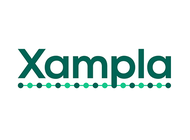Industry leaders predict a ‘White Space economy’
- Date 25 Aug 2011
Cambridge Consultants has today released a report discussing the foremost business opportunities in wireless technologies enabled by White Space frequencies, predicting the development of the first White Space consumer devices in the next five years. The report entitled: ‘White Space radio: High Street Hit or Left In the Lab?’ is the culmination of a White Space workshop hosted by Cambridge Consultants, and brings together experts from across the wireless and broadcast industries including representatives from Nokia, Samsung, BBC, BSkyB, Neul and CSR to discuss White Space technology.
Consensus from the report views the use of White Space radio as an inevitability, addressing a critical need for redressing methods of spectrum usage and opening up new possibilities for wireless devices. Much discussion of White Space to date has focused on the potential for helping meet rapidly increasing demand for mobile data on smartphones. However, the report emphasises that White Space technology has the potential to provide for a far broader range of applications and presents a solution for the ‘always on’ society.
Deemed the ‘White Space economy’, the report considers the expansive new business opportunities for a range of industries and suggests that initial market opportunities will emerge as a series of smaller, niche applications which would minimise dependency on multiple parties and require lower investment. In terms of revenue generation, White Space technologies could see returns both through direct data delivery or indirect revenue streams such as advertising. Data revenue may suit certain geographies for applications such as rural broadband, whereas advertising could be more suitable for applications such as local content broadcasting.
The report also examines the role of the UK as leading Europe in White Space development, and the role Ofcom has in creating a successful model that will set the blueprint for other countries to follow.
Specific opportunities highlighted in report include:
Micro or localised wireless Internet service providers (WISP)
There is great potential for businesses (supermarkets or local government, for example) operating in more remote areas to supply internet services and advertising to the local surrounding area. Delivery of personalised and location based services to very local clientele, for a very modest investment by the supplier, is an attractive new business model and the report speculates that delivery could cost as little as one tenth of the cost of copper.
Localised broadcasting
For broadcasters, there is now interest in using White Space for interactive ‘back-channel’ applications and the delivery of highly localised content and advertising.
The ‘Internet of Things’
Encompassing areas such as M2M, smart metering, and applications that require connectivity over a long-range but low data rate, White Space stands out as an enabler of the ‘Internet of Things’. White Space is especially appropriate firstly because the method for connecting can be optimised to meet the need for longer range and lower bit rate. Secondly, the data transferred is low rate and in some instances very infrequent, and for some applications the majority of data can be transferred at a time when it is less likely to cause interference.
The report predicts that we will see enterprise White Space devices developed by the end of 2011, and consumer devices entering the market in five years.
“It is important to view White Space as a platform that a multitude of technologies can use, presenting incredible potential for application far beyond simply supplementing traditional cellular networks. One of the main difficulties is identifying which vertical market will see significant headway first. Technology is being developed, but this is still largely hidden from public view and further demonstration of both the technology and specific market application is needed before significant investment is forthcoming.” Commented Fraser Edwards, Head of Radio Frequency Systems at Cambridge Consultants.
“A priority now should be establishing standards to allow for common platforms, economies of scale and large scale uptake. Without standards White Space could be a footnote, but effectively marshalled White Space has the potential to deliver even greater innovation and new services that we have seen in previously unlicensed spectrum such as WiFi and Bluetooth.”
– Ends –
Notes for editors
For further information, please contact:
Tim Masih
Press and Communications Manager
+44 1223 420024
European PR
Ben Smith
EML Wildfire
+44 20 8408 8000
Travis Small
Rasky Baerlein Strategic Communications
+1 617 391 9654



